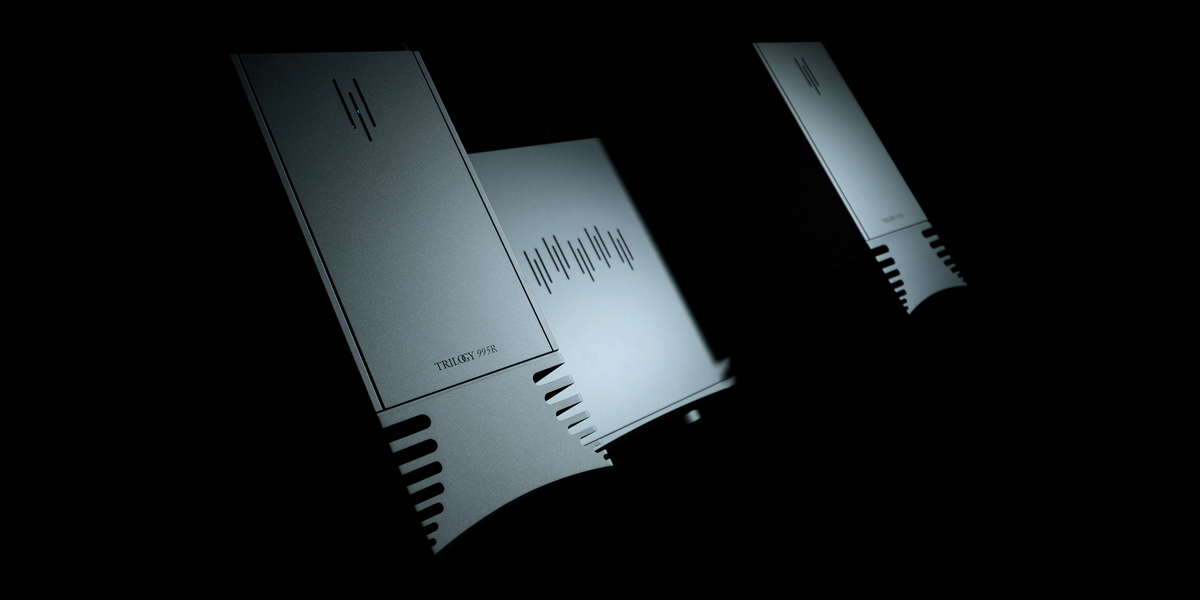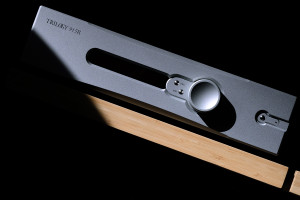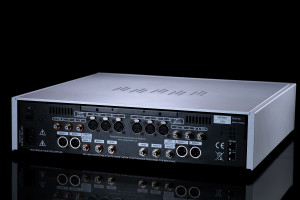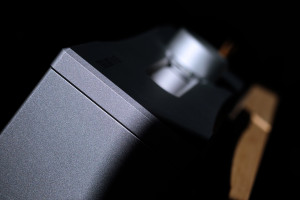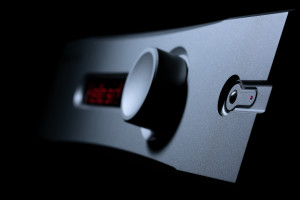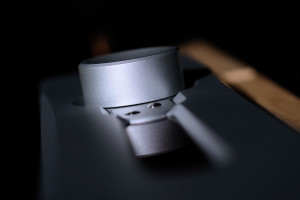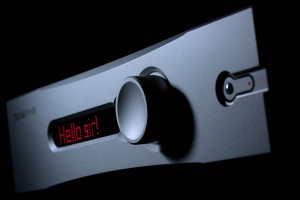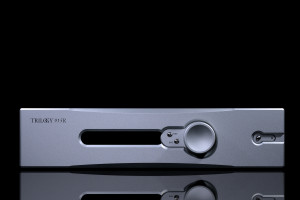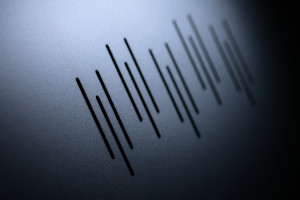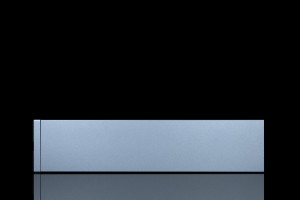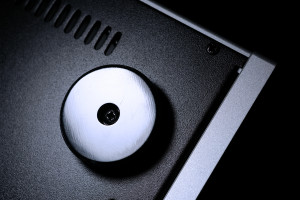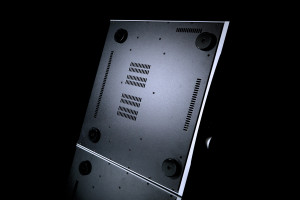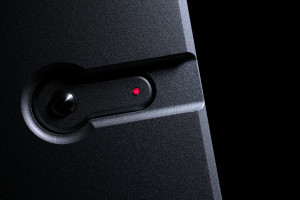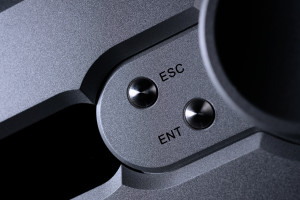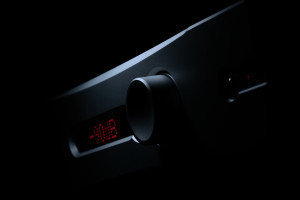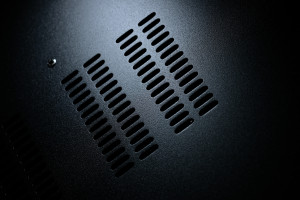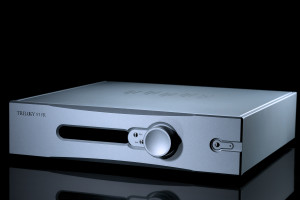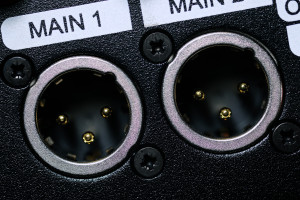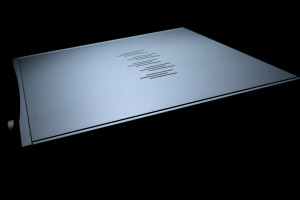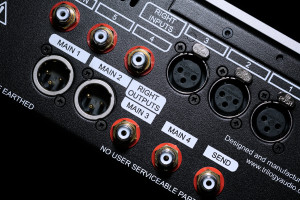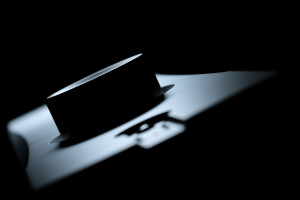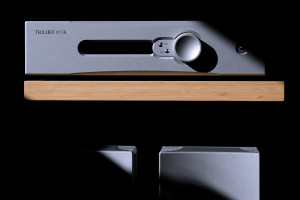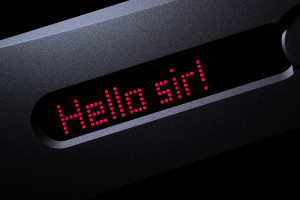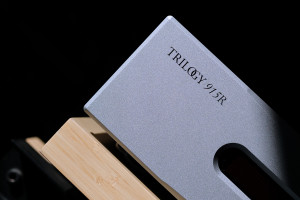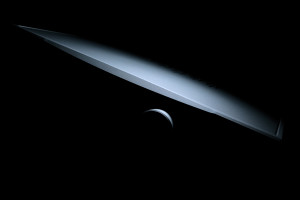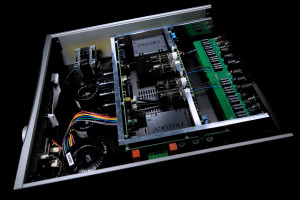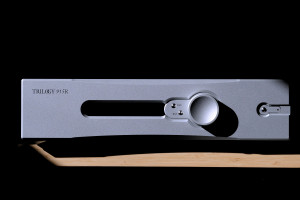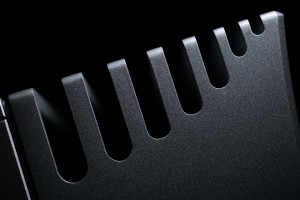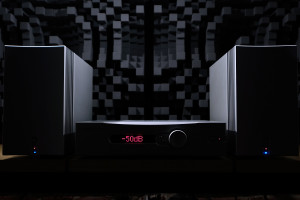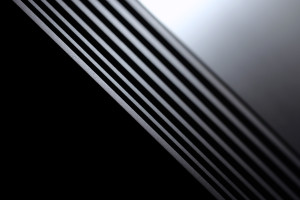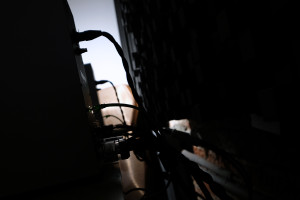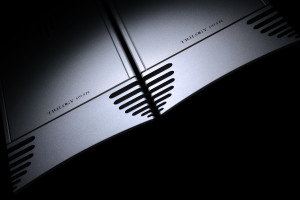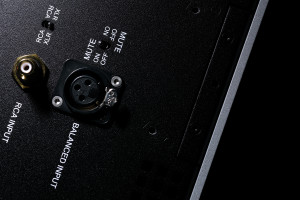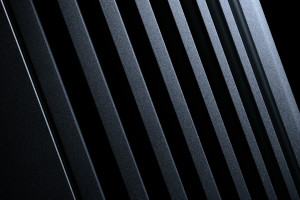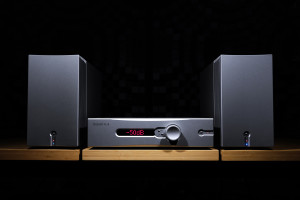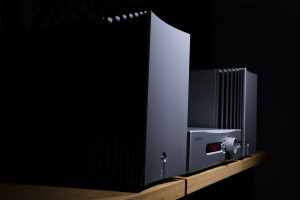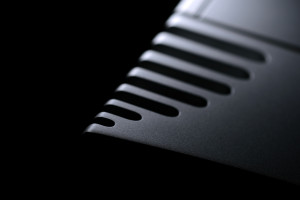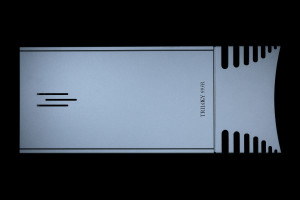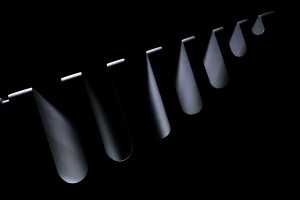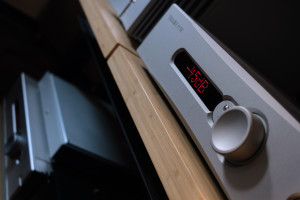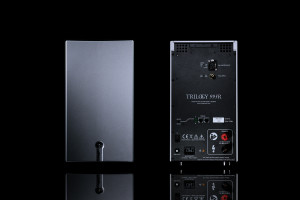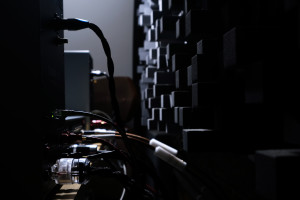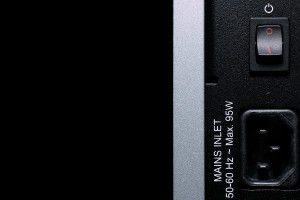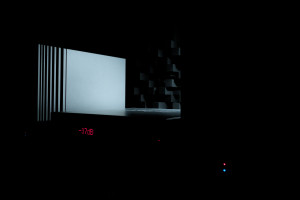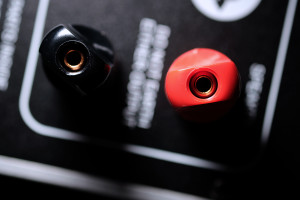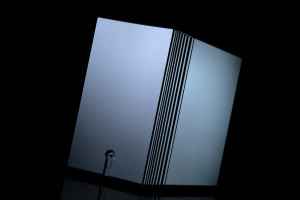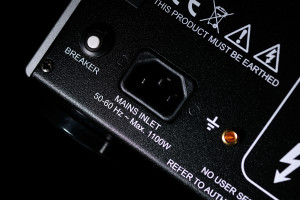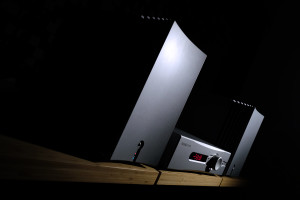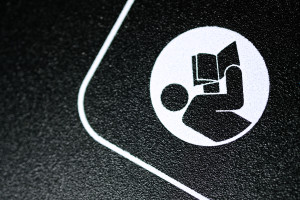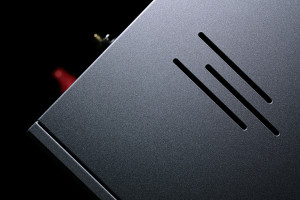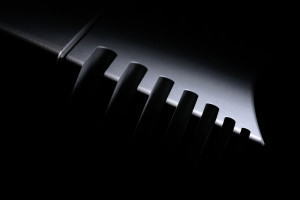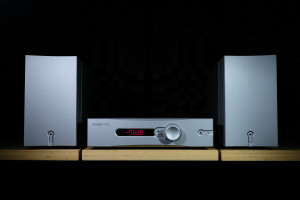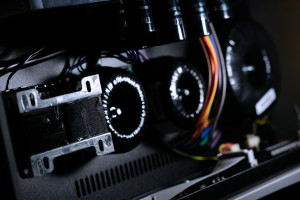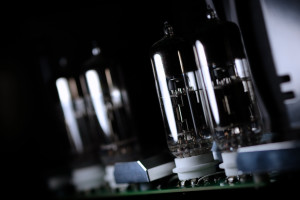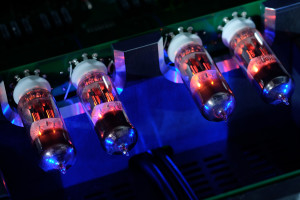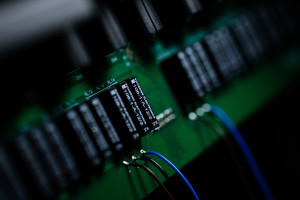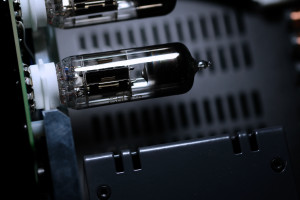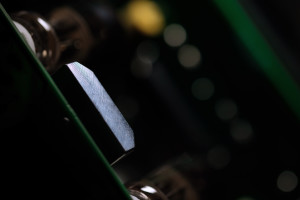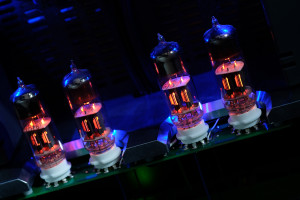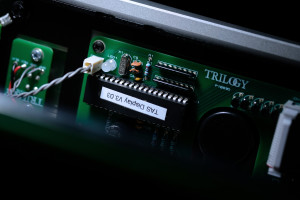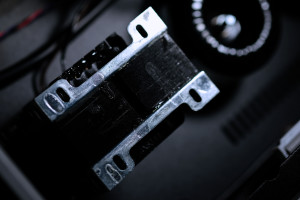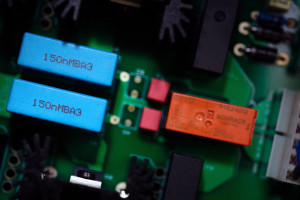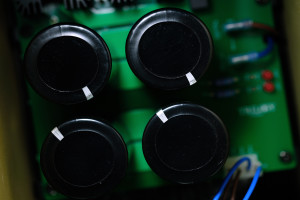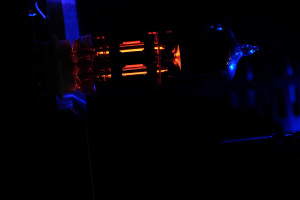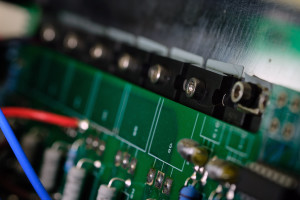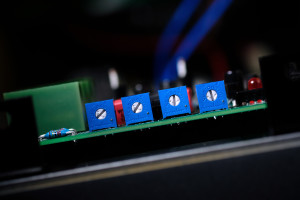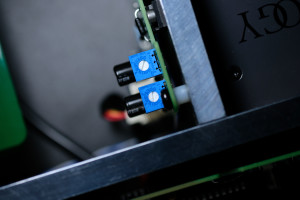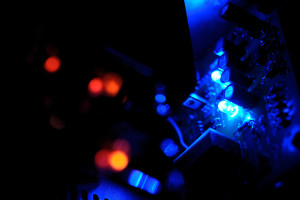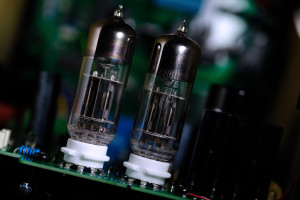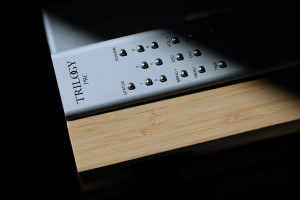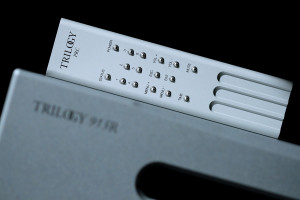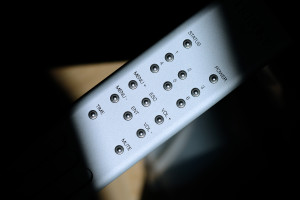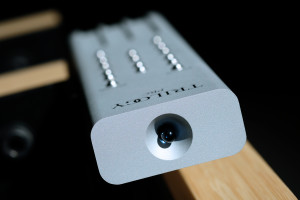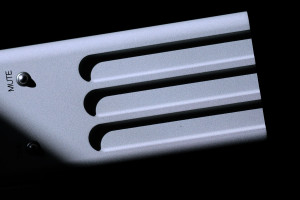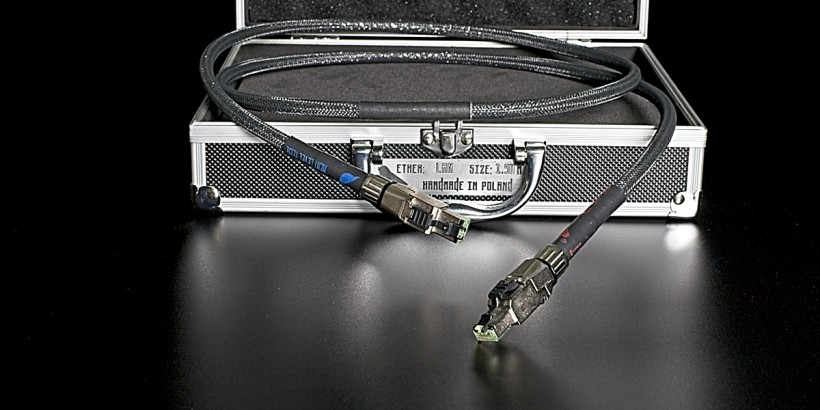As a happy Trilogy 925 owner familiar with most of Nic Poulson’s currently available goods, I looked forward to this particular assignment since early 2016. The waiting is over, the man’s Trilogy 995R and 915R top tier team has finally arrived. Enjoy!
Introduction
Trilogy 925 integrated amp, 903 and 908 line stages, 992 and 993 power amps and 931 plus 933 headphone decks is the list of all Nic’s hardware I’m familiar with. All these machines I’ve found truly impressive and quite similarly voiced as the man likes to serve his sound in a rather specific way, in his world music comes before all else. To end up with very much alike sonic characteristic regardless of a product’s type or price undoubtedly takes a lot of skill and certain mindset. I also consider Nic as one of the most talented engineers I’ve had the pleasure to meet. Not a single reason he provided to think otherwise, on the contrary to numerous evidence of him none other than a very passionate and dedicated individual, deeply obsessed with tiny things most people would either ignore or didn’t even notice. That’s seen very clearly in our engineer’s work and it’s likely that those who know him and his products would agree with me here. Sound in Nic’s and Sven Boenicke’s room in Munich in 2016 mesmerized me enough to purchase both items exhibited in there as a team shortly after. Trilogy 925 integrated amp and Boenicke W8 floorstanders have been on duty at my place ever since. With the Swiss rather demanding load nearby, the hybrid Brit wasn’t bested by many products, yet got dethroned a good while ago by i.e. its two-box kin; the 993 and 903. But most importantly, this twosome wasn’t meant to fight with the 925 over the top spot on the pedestal, on sheer quality and performance count all these products occupied the same space to my ears. However, due to loud and clear emphasis on different sound traits, not only the British two-piece set was viewed as a major sideways move in the thus far sonically quite uniform Trilogy portfolio, but also proved to be more fit for the difficult W8 job. It scored the A+ on synergy count with this particular Swiss and clearly triumphed over the 925 in the process, however with a twist: some of this integrated machine’s inherent magic and lordliness were the fixed price to pay.
Sound in Nic’s and Sven Boenicke’s room in Munich in 2016 mesmerized me enough to purchase both items exhibited in there as a team shortly after. Trilogy 925 integrated amp and Boenicke W8 floorstanders have been on duty at my place ever since. With the Swiss rather demanding load nearby, the hybrid Brit wasn’t bested by many products, yet got dethroned a good while ago by i.e. its two-box kin; the 993 and 903. But most importantly, this twosome wasn’t meant to fight with the 925 over the top spot on the pedestal, on sheer quality and performance count all these products occupied the same space to my ears. However, due to loud and clear emphasis on different sound traits, not only the British two-piece set was viewed as a major sideways move in the thus far sonically quite uniform Trilogy portfolio, but also proved to be more fit for the difficult W8 job. It scored the A+ on synergy count with this particular Swiss and clearly triumphed over the 925 in the process, however with a twist: some of this integrated machine’s inherent magic and lordliness were the fixed price to pay.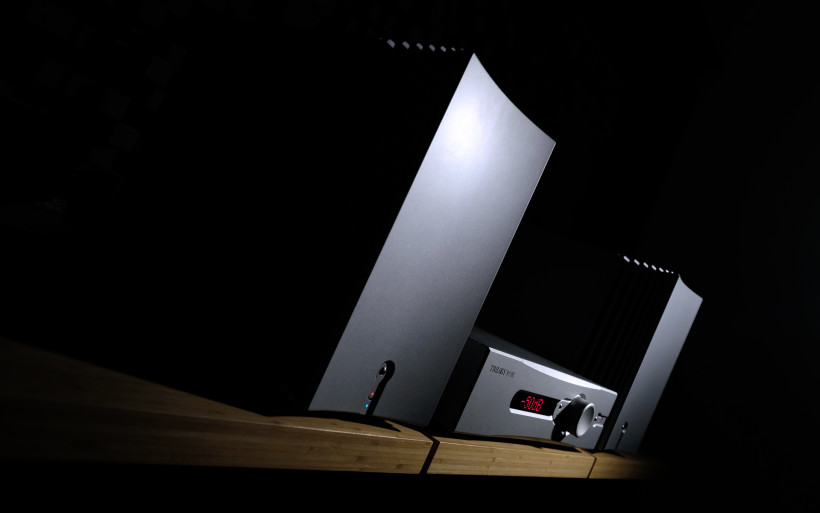 Nic’s 993 and 903 provided versatility beyond reach of his integrated and as such were viewed as smart additions to the Trilogy offer. A draw on sonic refinement between them implied that the differently flavoured 925 married to a more suitable load would’ve won with its siblings. That’s why to my ears not only it survived the brotherly fight, but left the battlefield quite unscratched. However, my familiarity with all these items invoked a daydream about their core traits combined in one creation free from any associated trade-offs. At that time Nic was already deep into R&D of such a full care package. It finally emerged after four years of intense work and revealed itself as a three-box statement specimen tiered way above listed models. The man not only granted my privy wish, but delivered far more. Simply put, he outdid himself and today’s review tells how exactly was he able to do so. Trilogy 995R mono amps and 915R line stage have finally appeared at my place. Well, hello there…
Nic’s 993 and 903 provided versatility beyond reach of his integrated and as such were viewed as smart additions to the Trilogy offer. A draw on sonic refinement between them implied that the differently flavoured 925 married to a more suitable load would’ve won with its siblings. That’s why to my ears not only it survived the brotherly fight, but left the battlefield quite unscratched. However, my familiarity with all these items invoked a daydream about their core traits combined in one creation free from any associated trade-offs. At that time Nic was already deep into R&D of such a full care package. It finally emerged after four years of intense work and revealed itself as a three-box statement specimen tiered way above listed models. The man not only granted my privy wish, but delivered far more. Simply put, he outdid himself and today’s review tells how exactly was he able to do so. Trilogy 995R mono amps and 915R line stage have finally appeared at my place. Well, hello there…
Trilogy 995R
Each 995R mono amplifier arrived snug via thick foam forms in a large inner box inside of outer cardboard. Albeit substantial, this cargo was cleverly designed to allow the product’s extraction single-handed. One ISOL-8 IsoLink Wave power cord (£120) was found inside as well, this is Nic Poulson’s other company focused solely on power related components. Just as most Trilogy products, the 995R is a hybrid machine. It measures (W x D x H) 190 x 460 x 350mm and weighs healthy 38 kilograms, hence is fairly compact but feels very heavy. Carrying it around wasn’t impossible for yours truly though surely difficult, however there’s a good reason for that. Today’s class AB specimen delivers 200W into 8Ω, which isn’t shocking by any means. But its alternate class A mode outputs 40W (usable 55W) with the same load. Just as such a product it should, the 995R gets very hot very quickly in effect, hence massive radiation surface to dissipate all heat had to follow. The Brit’s frequency response is 5Hz – 100KHz (+/-0.5dB) and gain on SE/balanced inputs is respectively 31 and 25dB.
Just as most Trilogy products, the 995R is a hybrid machine. It measures (W x D x H) 190 x 460 x 350mm and weighs healthy 38 kilograms, hence is fairly compact but feels very heavy. Carrying it around wasn’t impossible for yours truly though surely difficult, however there’s a good reason for that. Today’s class AB specimen delivers 200W into 8Ω, which isn’t shocking by any means. But its alternate class A mode outputs 40W (usable 55W) with the same load. Just as such a product it should, the 995R gets very hot very quickly in effect, hence massive radiation surface to dissipate all heat had to follow. The Brit’s frequency response is 5Hz – 100KHz (+/-0.5dB) and gain on SE/balanced inputs is respectively 31 and 25dB.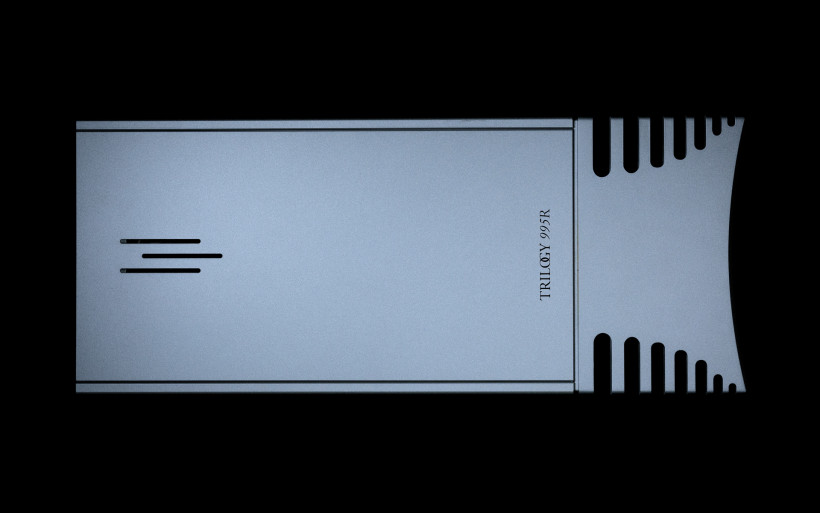 Due to its tower alike enclosure, Trilogy 995R doesn’t look like a regular mono amp but minimalist uniquely styled tower alike product, which doesn’t occupy too much space. That’s just my privy opinion, but such a clean design is truly elegant and impressive. The 995R’s thick, slightly curved and massive front sports ribs of different thickness on the sides. This radiator scheme also found on Trilogy’s 925 and 993 models is executed like so to increase dissipation efficiency. The secondary on/off switch found in a small recession on the product’s front neighbours with two diodes; red and blue. Only the former is engaged if the the machine is set in class AB, whereas class A bias (…or its ‘eco’ twist described below) turns on the latter to have both lit up. The manufacturer’s logo and several openings are found up top and three small pucks in total are found on the bottom.
Due to its tower alike enclosure, Trilogy 995R doesn’t look like a regular mono amp but minimalist uniquely styled tower alike product, which doesn’t occupy too much space. That’s just my privy opinion, but such a clean design is truly elegant and impressive. The 995R’s thick, slightly curved and massive front sports ribs of different thickness on the sides. This radiator scheme also found on Trilogy’s 925 and 993 models is executed like so to increase dissipation efficiency. The secondary on/off switch found in a small recession on the product’s front neighbours with two diodes; red and blue. Only the former is engaged if the the machine is set in class AB, whereas class A bias (…or its ‘eco’ twist described below) turns on the latter to have both lit up. The manufacturer’s logo and several openings are found up top and three small pucks in total are found on the bottom.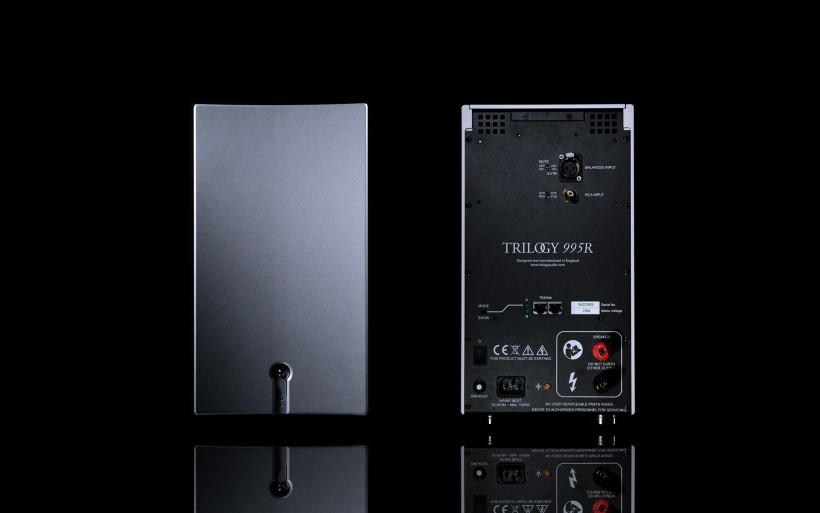 The 995R’s rear houses a pair of robust and utmost conveniently usable speaker terminals by Mundorf. A small socket to connect external ground on the left gives a way to think that we might see some complementary items in the future. The IEC socket and breaker found in this area neighbour with the main on/off switch and Trilogy’s proprietary TASlink network based on two RJ45s sits above them. A petite button just next to this interface is the 995R’s mode selector, which allows one to cycle through this amp’s three different modes; class AB, A and eco A. The last one is typical class A case when the music’s on, however transistor bias is significantly decreased to reduce power draw if there’s no signal for a minute. Nic explained that it took four months of work to have this mode operational as originally intended, namely stable and with no performance sacrificed. And lastly, input selection and mute knobs in close proximity to XLR and RCA sockets on the 995R’s back have labels written both regularly and upside down. Because of this clever solution there was no need to go behind the product to see what was currently engaged.
The 995R’s rear houses a pair of robust and utmost conveniently usable speaker terminals by Mundorf. A small socket to connect external ground on the left gives a way to think that we might see some complementary items in the future. The IEC socket and breaker found in this area neighbour with the main on/off switch and Trilogy’s proprietary TASlink network based on two RJ45s sits above them. A petite button just next to this interface is the 995R’s mode selector, which allows one to cycle through this amp’s three different modes; class AB, A and eco A. The last one is typical class A case when the music’s on, however transistor bias is significantly decreased to reduce power draw if there’s no signal for a minute. Nic explained that it took four months of work to have this mode operational as originally intended, namely stable and with no performance sacrificed. And lastly, input selection and mute knobs in close proximity to XLR and RCA sockets on the 995R’s back have labels written both regularly and upside down. Because of this clever solution there was no need to go behind the product to see what was currently engaged.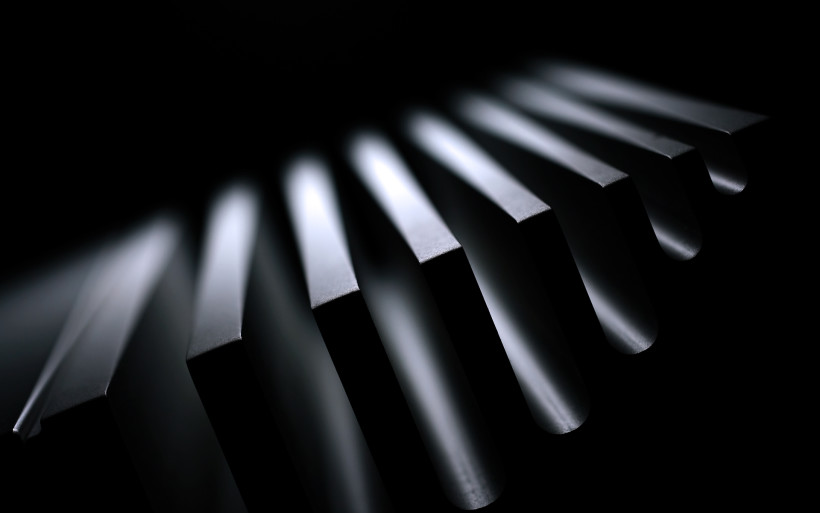 Trilogy 995R internally looks as good as on the outside. The circuit has no feedback, is fully balanced and so is its bridged output stage. Its hybrid topology involves two 6H6P valves as voltage amplifiers, whereas small linear MOSFETs on duty with 12 Japanese Bipolars form the product’s push-pull compound stage. The PSU based on a large toroidal transformer and caps made for Trilogy exclusively, enjoys kosher full choke input supply.
Trilogy 995R internally looks as good as on the outside. The circuit has no feedback, is fully balanced and so is its bridged output stage. Its hybrid topology involves two 6H6P valves as voltage amplifiers, whereas small linear MOSFETs on duty with 12 Japanese Bipolars form the product’s push-pull compound stage. The PSU based on a large toroidal transformer and caps made for Trilogy exclusively, enjoys kosher full choke input supply.
Trilogy 915R
Trilogy 915R line stage was put in-between precisely matched foams and delivered in a double cardboard, which also housed a handy manual, the very same ISOL-8 IsoLink Wave power cord as found in the 995R and a quality Trilogy PRC remote. This rather expensive and gorgeously executed controller normally is sold as an optional accessory to complement all previously released Trilogy preamps, however the not exactly affordable 915R has it as the standard feature.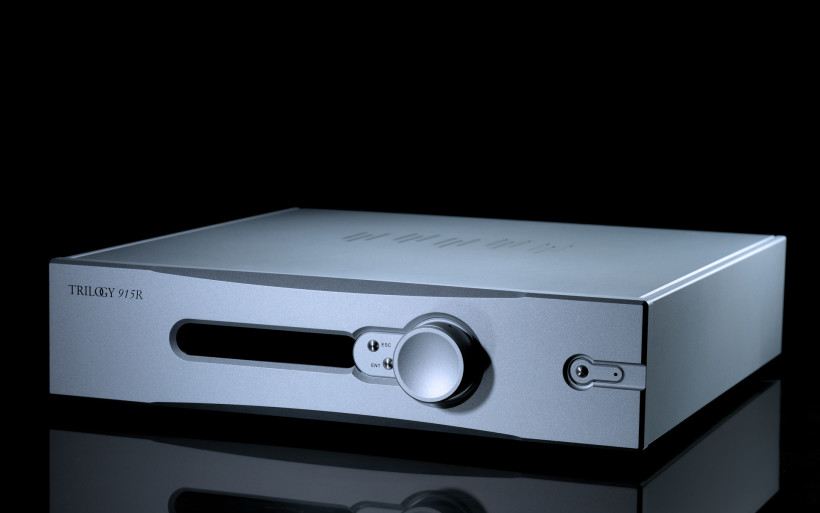 Trilogy 915R measures (W x D x H) 465 x 450 x 118mm and weighs 19 kilograms. These numbers make it a regularly sized and shaped hardware, albeit of unusual weight for a line stage. It feels almost as substantial as my integrated deck by the same manufacturer. As far as specs go, the product’s gain is set at 14dB (single-ended and balanced) and its frequency response is 20-45KHz (+/-0.5dB).
Trilogy 915R measures (W x D x H) 465 x 450 x 118mm and weighs 19 kilograms. These numbers make it a regularly sized and shaped hardware, albeit of unusual weight for a line stage. It feels almost as substantial as my integrated deck by the same manufacturer. As far as specs go, the product’s gain is set at 14dB (single-ended and balanced) and its frequency response is 20-45KHz (+/-0.5dB).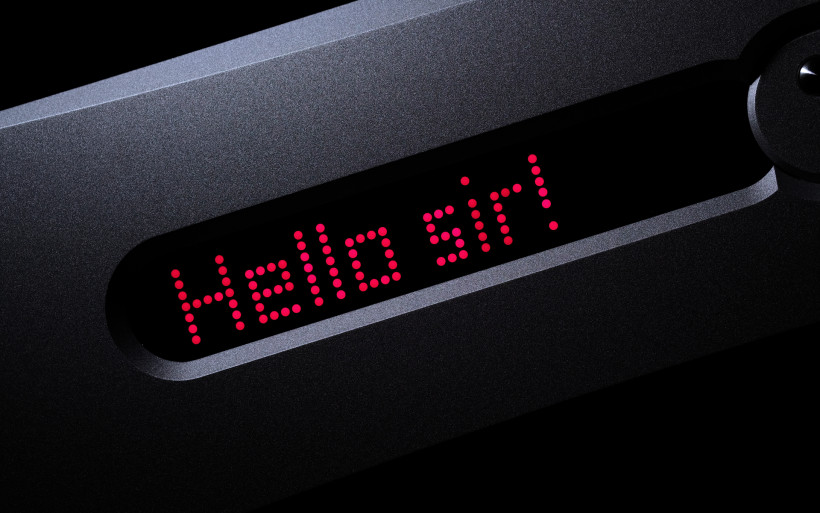 The 915R visually resembles its smaller more affordable 993 kin. Its enclosure is fully made of precisely cut and matched aluminium coated with very nice satin paint. The front looks very simple, however small trimmings on its top and bottom edges make it subjectively very appealing. The manufacturer logo found in its far left corner neighbours with rounded concave, which perfectly readable big LED dot matrix display, two functional buttons (‘ESC’ and ‘ENT’) and endlessly rotating knob call home. The recession near the right ledge sports the secondary on/off switch and a diode which goes red once the product is on. It doesn’t go unnoticed how nicely everything is executed and married together. The fit’n’finish game Nic clearly has down pat; all buttons are pleasantly clicky, utmost practical display is second to none to me and a superb rotary wheel right next to it scores the highest notes possible on heft and smoothness of its operation. The 915R not only looks, but also feels like a costly luxurious audio hardware. To spend some time with this deck and tinker with its pleasantly responsive fluent interface is to partially understand why it’s this costly.
The 915R visually resembles its smaller more affordable 993 kin. Its enclosure is fully made of precisely cut and matched aluminium coated with very nice satin paint. The front looks very simple, however small trimmings on its top and bottom edges make it subjectively very appealing. The manufacturer logo found in its far left corner neighbours with rounded concave, which perfectly readable big LED dot matrix display, two functional buttons (‘ESC’ and ‘ENT’) and endlessly rotating knob call home. The recession near the right ledge sports the secondary on/off switch and a diode which goes red once the product is on. It doesn’t go unnoticed how nicely everything is executed and married together. The fit’n’finish game Nic clearly has down pat; all buttons are pleasantly clicky, utmost practical display is second to none to me and a superb rotary wheel right next to it scores the highest notes possible on heft and smoothness of its operation. The 915R not only looks, but also feels like a costly luxurious audio hardware. To spend some time with this deck and tinker with its pleasantly responsive fluent interface is to partially understand why it’s this costly.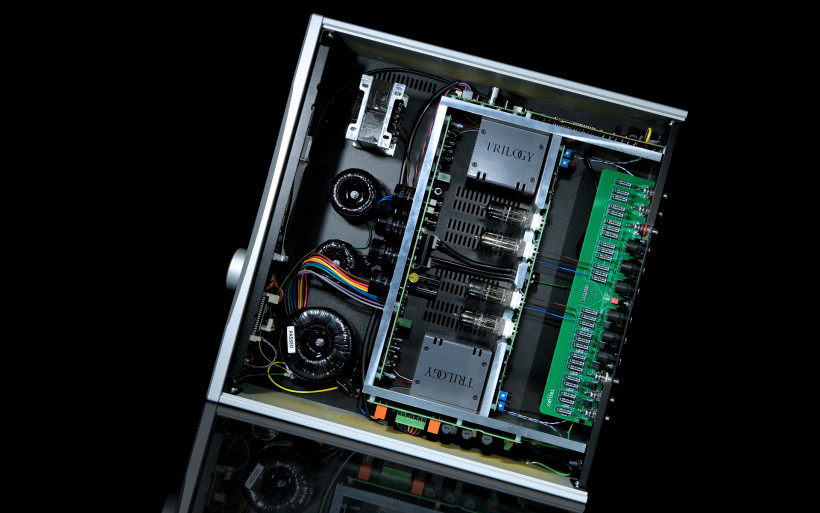 The product’s top sports several openings to help with venting, whereas four feet in total found on its underbelly are the very same as in the 995R. The 915R’s rear sports the usual suspects; the main on/off switch and IEC inlet on the left, TASlink RJ45 socketry on the far right and a number of connections by Cardas (RCA) and Neutrik (XLR) in-between. There are six inputs (3x RCA, 3x XLR), four outputs (2x RCA, 2x XLR) and one RCA send (record) out in total. One of SE inputs can be also used as a return channel.
The product’s top sports several openings to help with venting, whereas four feet in total found on its underbelly are the very same as in the 995R. The 915R’s rear sports the usual suspects; the main on/off switch and IEC inlet on the left, TASlink RJ45 socketry on the far right and a number of connections by Cardas (RCA) and Neutrik (XLR) in-between. There are six inputs (3x RCA, 3x XLR), four outputs (2x RCA, 2x XLR) and one RCA send (record) out in total. One of SE inputs can be also used as a return channel.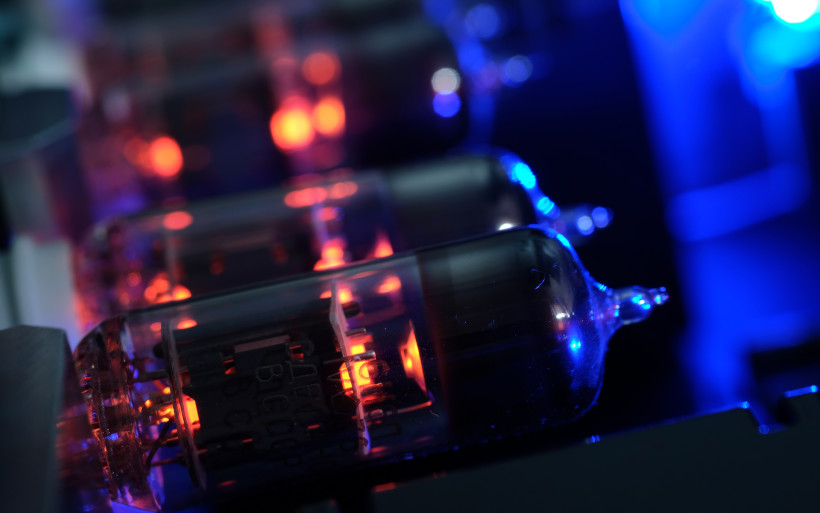 Once the 915R is turned on, its display welcomes us with a 30 seconds long warm up message followed by request of a unique PIN code, which can be disengaged later on from the menu. Speaking of which, it provides extensive set of features, such as the product’s LED matrix dimmed or turned off, time and date set, channel balance set and each input named individually. Certain features hid a bit deeper in the menu most people won’t use even once; valves’ work hours or temperature read of connected Trilogy amps, real-time bar graph instead of volume level, days of week and specific hours to turn on everything strapped to TASlink etc. Nonetheless, available options are generous and out there for those willing to go beyond basics. Nic clearly went the extra mile on functionality count yet again, which is admirable.
Once the 915R is turned on, its display welcomes us with a 30 seconds long warm up message followed by request of a unique PIN code, which can be disengaged later on from the menu. Speaking of which, it provides extensive set of features, such as the product’s LED matrix dimmed or turned off, time and date set, channel balance set and each input named individually. Certain features hid a bit deeper in the menu most people won’t use even once; valves’ work hours or temperature read of connected Trilogy amps, real-time bar graph instead of volume level, days of week and specific hours to turn on everything strapped to TASlink etc. Nonetheless, available options are generous and out there for those willing to go beyond basics. Nic clearly went the extra mile on functionality count yet again, which is admirable.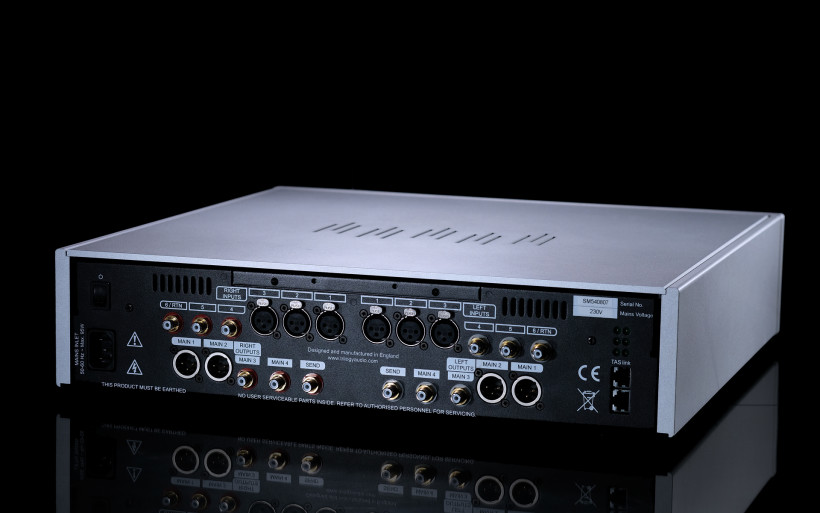 Just as Trilogy 995R monos, the 915R is fully balanced through and through, with no feedback, of hybrid sort and no less impressive inside. Its volume control is based on a FET/relay ladder embedded inside of a chip, whereas the large knob on the front connects to a digitally managed shaft encoder. All the gain is provided by a set of four 6H6P valves, which share a very solid internal compartment with Lundahl’s output transformers, each hid inside of a nicely looking screen. The product’s PSU is based on three toroidal transformers (one for each key circuit) and one input choke.
Just as Trilogy 995R monos, the 915R is fully balanced through and through, with no feedback, of hybrid sort and no less impressive inside. Its volume control is based on a FET/relay ladder embedded inside of a chip, whereas the large knob on the front connects to a digitally managed shaft encoder. All the gain is provided by a set of four 6H6P valves, which share a very solid internal compartment with Lundahl’s output transformers, each hid inside of a nicely looking screen. The product’s PSU is based on three toroidal transformers (one for each key circuit) and one input choke.
Sound
In order to review Trilogy 995R and 915R, fidata HFAS-S10U handled storage and transport duties, then LampizatOr Pacific DAC (KR Audio T-100 + KR Audio 5U4G Ltd. Ed.) took over to pass the signal either to the Trilogy 925 or the 915R/995R team and then to my Boenicke W8 or Martin Gateley’s soundkaos Libération. Trilogy’s line stage also battled with Kinki Studio’s EX-P7 in the same setup. Once this was sorted, then Nelson’s FirstWatt F7 and Swiss dipoles came into play to provide even more insight. On duty were also cables by LessLoss and Audiomica Laboratory, whereas iFi audio’s iGalvanic3.0, iUSB3.0, one iPower PSU and three suitable USB leashes found their place in-between my server/transport and DAC. Every component was plugged to the GigaWatt PC-3 SE EVO+ power conditioner.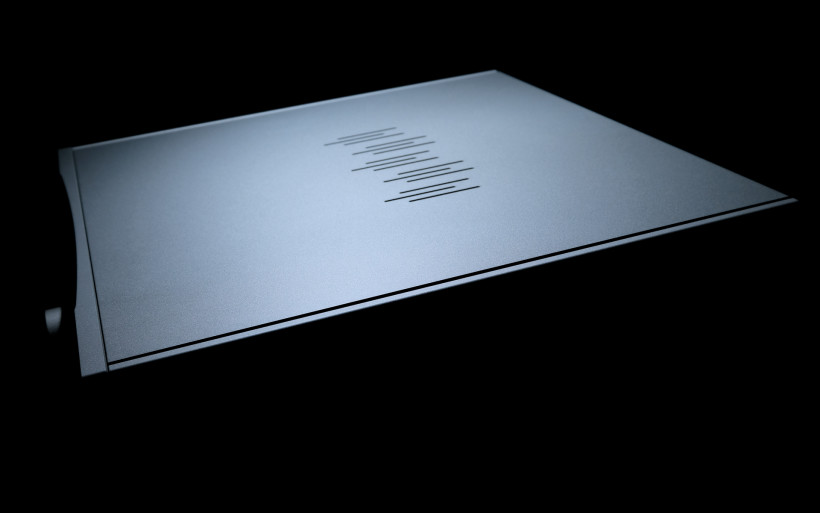 Trilogy 925 has been employed at my place long enough to know that its key traits are on-stage presence, vividness, gravity, substance, textural juiciness and calmness. This machine in particular represents attitude, which can be easily labeled as musical and enchanting. Although very capable of taking a listener to its place in utmost inviting, involving, easygoing and charming fashion, the 925 isn’t after speed though. Instead of hitting in series, it throws meticulous and exceptionally powerful blows one at a time. It’s rather felt than heard once these connect and this core trait is one of the major substance providers. When combined, all listed features shape the Brit as no flashy attention seeker, but posh, distinct, refined and fully-grown specimen instead. Unless one’s after music served the dissective, lit up and exposed way, Nic’s all-in-one is very enjoyable to listen to. With tough loads it can sound a tad dark and veiled, hence needs matched companions to fully shine (which product doesn’t?), however its personality and input are sensible regardless of hardware nearby.
Trilogy 925 has been employed at my place long enough to know that its key traits are on-stage presence, vividness, gravity, substance, textural juiciness and calmness. This machine in particular represents attitude, which can be easily labeled as musical and enchanting. Although very capable of taking a listener to its place in utmost inviting, involving, easygoing and charming fashion, the 925 isn’t after speed though. Instead of hitting in series, it throws meticulous and exceptionally powerful blows one at a time. It’s rather felt than heard once these connect and this core trait is one of the major substance providers. When combined, all listed features shape the Brit as no flashy attention seeker, but posh, distinct, refined and fully-grown specimen instead. Unless one’s after music served the dissective, lit up and exposed way, Nic’s all-in-one is very enjoyable to listen to. With tough loads it can sound a tad dark and veiled, hence needs matched companions to fully shine (which product doesn’t?), however its personality and input are sensible regardless of hardware nearby. As a team, the 993 and 903 also showcase the Trilogy voice well, but to far lesser extent than their integrated sibling. Nic’s duo on duty truly doesn’t sound like the 925; agility and openness delivered in very fit fashion form its core, not magic and charm. Trilogy’s separates also score higher notes than the 925 on transparency and effortlessness. With his two-box set Nic took the high fidelity route. After getting to know it, I can only say that it wasn’t bumpy at all, the major profile twist that occurred did the trick brilliantly. In my 993/903 summary I wrote that these products together thrive on challenges and I still stand by it. Of all devices matched with my W8 over three years in total, the only one able to keep up with the Brits with this particular Swiss product was Kinki Studio EX-M1 integrated. There was one catch though, Trilogy’s power amp and line stage didn’t sound as enchanting as the 925, which reminded me about my own transition; the harmonically packed LampizatOr Golden Gate stepped down to leave room for the far feistier and hi-rez focused Pacific DAC by the same manufacturer.
As a team, the 993 and 903 also showcase the Trilogy voice well, but to far lesser extent than their integrated sibling. Nic’s duo on duty truly doesn’t sound like the 925; agility and openness delivered in very fit fashion form its core, not magic and charm. Trilogy’s separates also score higher notes than the 925 on transparency and effortlessness. With his two-box set Nic took the high fidelity route. After getting to know it, I can only say that it wasn’t bumpy at all, the major profile twist that occurred did the trick brilliantly. In my 993/903 summary I wrote that these products together thrive on challenges and I still stand by it. Of all devices matched with my W8 over three years in total, the only one able to keep up with the Brits with this particular Swiss product was Kinki Studio EX-M1 integrated. There was one catch though, Trilogy’s power amp and line stage didn’t sound as enchanting as the 925, which reminded me about my own transition; the harmonically packed LampizatOr Golden Gate stepped down to leave room for the far feistier and hi-rez focused Pacific DAC by the same manufacturer.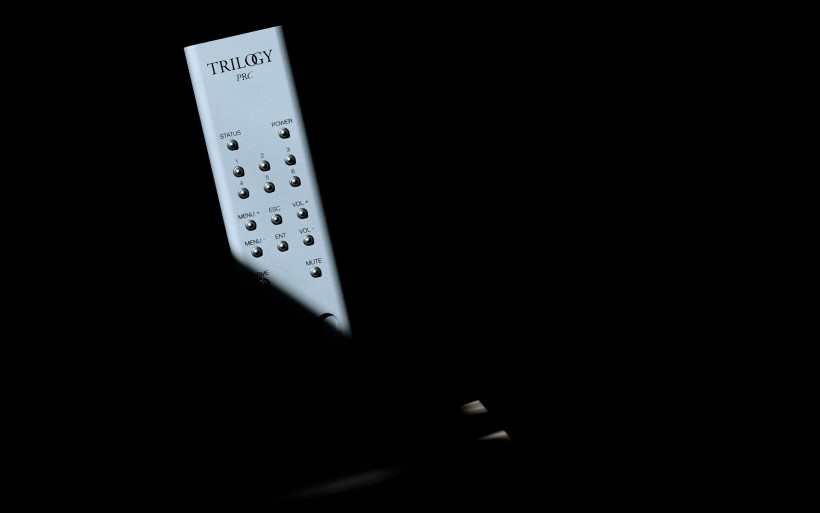 The difference between my 925 and the 993 strapped to the 903 was very clear to my ears, however audible disparity between this integrated and the 995R/915R combo was far bigger. The latest Brits wasted no time at all, a fairly brief comparison was all it took to fully grasp what they brought to the table, whereas the following weeks in their company merely reassured me in my early findings. We hear and read about the law of diminishing returns, how more times than not it hits our wallets hard and that it always should be taken into consideration. This time around it simply didn’t apply and here’s why: the very best traits of his 925 Nic married to all key virtues of his two-piece team and once this was done, he then boosted the effect exponentially. I honestly am not capable of framing this confession in any numbers, however fully responsibly I’ll say this: my own 925 took senseless beating on each count I could think of. It wasn’t a fight but a slaughter, which I truly didn’t see coming.
The difference between my 925 and the 993 strapped to the 903 was very clear to my ears, however audible disparity between this integrated and the 995R/915R combo was far bigger. The latest Brits wasted no time at all, a fairly brief comparison was all it took to fully grasp what they brought to the table, whereas the following weeks in their company merely reassured me in my early findings. We hear and read about the law of diminishing returns, how more times than not it hits our wallets hard and that it always should be taken into consideration. This time around it simply didn’t apply and here’s why: the very best traits of his 925 Nic married to all key virtues of his two-piece team and once this was done, he then boosted the effect exponentially. I honestly am not capable of framing this confession in any numbers, however fully responsibly I’ll say this: my own 925 took senseless beating on each count I could think of. It wasn’t a fight but a slaughter, which I truly didn’t see coming. The 993/903’s momentum and zeal and the 925’s hefty presence and charm the Trilogy statement setup clearly sported, but its on-stage grandeur arrived as the real shock. Nic’s latest team had my W8 in truly iron grip, which led to music served in immensely impactful and feisty way and this was expected. I’ve emphasized many times in my work how potent Sven’s Swiss boxes are on this count once fed properly. But what Trilogy’s statement goods did with this load was new; far wilder, bolder and more majestic than ever before, that I’m sure of. I haven’t yet heard the W8 this quick, big, open-throated and thunderous, but sheer size of space up front and on the sides along with all its residents was the true clincher. Spatial image was of truly gargantuan width and everything served in there was far more organic, present and articulate than the 925 was ever capable of portraying. There was no fee for this service, no artificial expansion via upped top end and/or instrumental distance elevated. No trickery was involved, everything imaging and sizing related the British set displayed naturally and completely effortlessly.
The 993/903’s momentum and zeal and the 925’s hefty presence and charm the Trilogy statement setup clearly sported, but its on-stage grandeur arrived as the real shock. Nic’s latest team had my W8 in truly iron grip, which led to music served in immensely impactful and feisty way and this was expected. I’ve emphasized many times in my work how potent Sven’s Swiss boxes are on this count once fed properly. But what Trilogy’s statement goods did with this load was new; far wilder, bolder and more majestic than ever before, that I’m sure of. I haven’t yet heard the W8 this quick, big, open-throated and thunderous, but sheer size of space up front and on the sides along with all its residents was the true clincher. Spatial image was of truly gargantuan width and everything served in there was far more organic, present and articulate than the 925 was ever capable of portraying. There was no fee for this service, no artificial expansion via upped top end and/or instrumental distance elevated. No trickery was involved, everything imaging and sizing related the British set displayed naturally and completely effortlessly.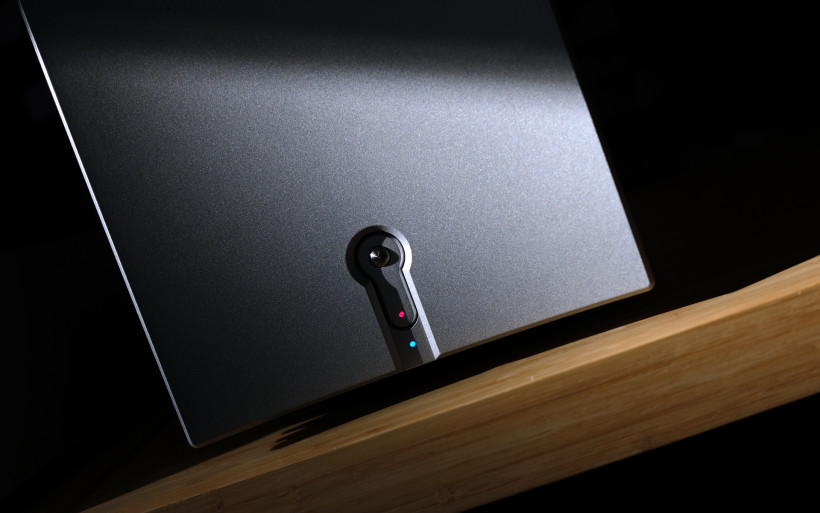 Nic ‘warned’ me about openness and spatial potency of his top of the line hardware. As a journo quite used to large musical landscapes I felt perfectly safe. Still, my high expectations in this specific regard were surpassed by proverbial mile. Fully developed, organic, finely contoured and artfully separated shapes sketched by the 995R/915R duo not only felt very much alive, but occupied as equally vibrant space. Stunningly big, served as closely or distantly as repertoire allowed and pleasantly hydrated, it felt utmost coherent, admirably open, substantial, movable and tangible at the same time. Each and every imaging related aspect was a spot on, any attempts of fishing for things subjectively more or less pleasing to my ears seemed as irrelevant as personal fads.
Nic ‘warned’ me about openness and spatial potency of his top of the line hardware. As a journo quite used to large musical landscapes I felt perfectly safe. Still, my high expectations in this specific regard were surpassed by proverbial mile. Fully developed, organic, finely contoured and artfully separated shapes sketched by the 995R/915R duo not only felt very much alive, but occupied as equally vibrant space. Stunningly big, served as closely or distantly as repertoire allowed and pleasantly hydrated, it felt utmost coherent, admirably open, substantial, movable and tangible at the same time. Each and every imaging related aspect was a spot on, any attempts of fishing for things subjectively more or less pleasing to my ears seemed as irrelevant as personal fads.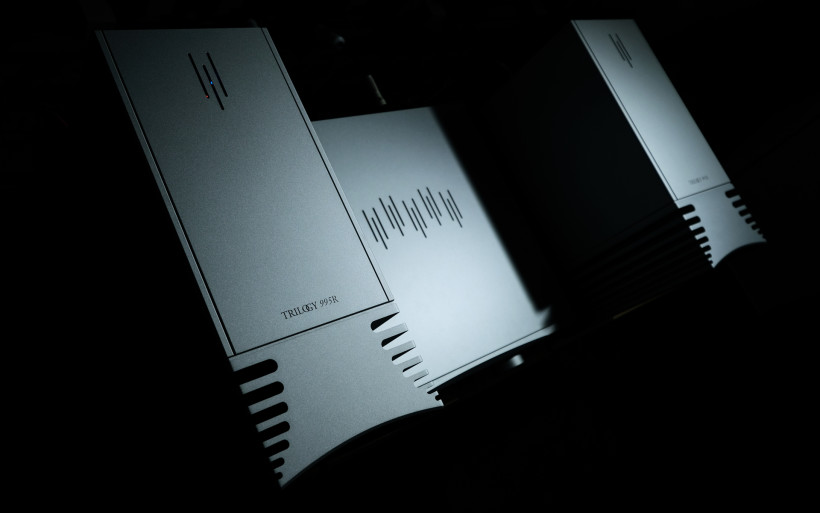 If the 925 punched calmly yet powerfully and the 993/903 delivered shorter, quicker, more numerous and precise blows, then the Trilogy statement trio did all this at once without a single drop of sweat. Even the fiercest the most dynamically challenging passages on my playlist it turned into a child’s play. Without a doubt, these three products as a team morphed my W8 into the most effortlessly and nimble sounding version of itself I’ve had the pleasure to audition to date, a beast. On crack, downstairs reach and immediacy counts, today’s hardware went off scale in a big way. There’s no exaggeration in saying that the Brits turned the W8 into a very much OB alike product, the amount of air its petite long-throw woofers pushed was as equally spectacular as control Trilogy’s monos had over it. The Swiss just kept going and going to no end in the same exact fashion regardless of SPL, whereas the only show-stopper before going any louder was common sense. Not a hint of boom or any sort of downstairs related struggle were heard, even the biggest most intense music had this realm in perfect check and exceptionally easefully served.
If the 925 punched calmly yet powerfully and the 993/903 delivered shorter, quicker, more numerous and precise blows, then the Trilogy statement trio did all this at once without a single drop of sweat. Even the fiercest the most dynamically challenging passages on my playlist it turned into a child’s play. Without a doubt, these three products as a team morphed my W8 into the most effortlessly and nimble sounding version of itself I’ve had the pleasure to audition to date, a beast. On crack, downstairs reach and immediacy counts, today’s hardware went off scale in a big way. There’s no exaggeration in saying that the Brits turned the W8 into a very much OB alike product, the amount of air its petite long-throw woofers pushed was as equally spectacular as control Trilogy’s monos had over it. The Swiss just kept going and going to no end in the same exact fashion regardless of SPL, whereas the only show-stopper before going any louder was common sense. Not a hint of boom or any sort of downstairs related struggle were heard, even the biggest most intense music had this realm in perfect check and exceptionally easefully served.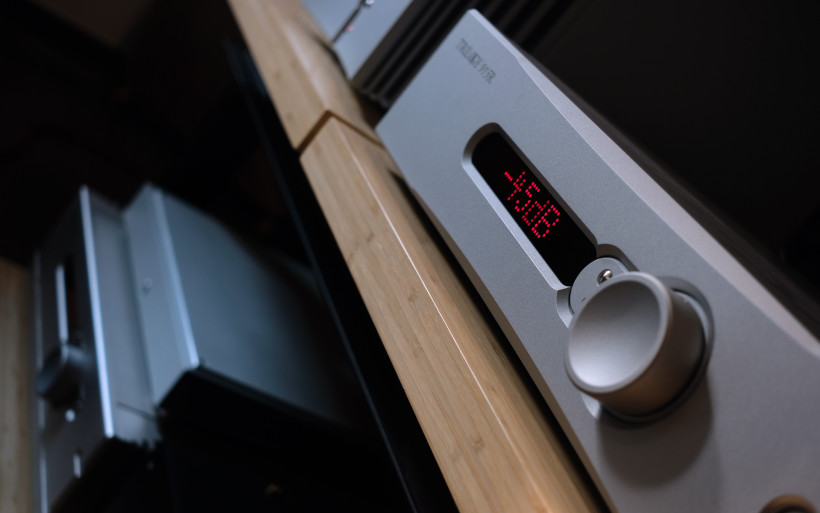 As a softer, boomier and slower, but also far less open, less palpable and less orderly product, my Trilogy 925 was no match for its pricier kin. It was barely able to keep up on these counts at low volume, but the higher SPL was, the bigger quality gap between Nic’s goods the W8 showcased. My integrated deck also got beaten to a pulp on textural complexity, upstairs decay and overall articulation. The 995R/915R team surely wasn’t a one trick pony. Openness, tonal balance, moisture and agility are features rarely heard together, but the Trilogy trio finely blended them all and additionally raised the bar via spotless instrumental canvas and perfect separation. This translated to pinpoint accuracy, fabulous clarity and tremendous insight. The naturally dim 925 was no longer dark, mysterious and magical in comparison, but stuffy and opaque.
As a softer, boomier and slower, but also far less open, less palpable and less orderly product, my Trilogy 925 was no match for its pricier kin. It was barely able to keep up on these counts at low volume, but the higher SPL was, the bigger quality gap between Nic’s goods the W8 showcased. My integrated deck also got beaten to a pulp on textural complexity, upstairs decay and overall articulation. The 995R/915R team surely wasn’t a one trick pony. Openness, tonal balance, moisture and agility are features rarely heard together, but the Trilogy trio finely blended them all and additionally raised the bar via spotless instrumental canvas and perfect separation. This translated to pinpoint accuracy, fabulous clarity and tremendous insight. The naturally dim 925 was no longer dark, mysterious and magical in comparison, but stuffy and opaque.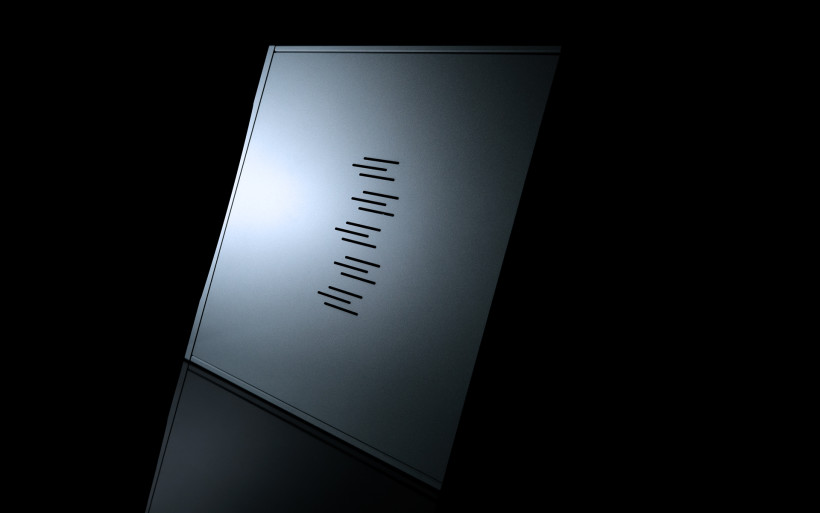 I imagine that Trilogy’s top tier hardware described up to this point can be viewed as a hi-performance hardware not quite capable of presenting music in beautiful and fetching fashion. We got used to the fact that potency of one approach means the other lessened, however today’s hardware goes beyond this schematic. Harmonic richness, charm and expressiveness form its very core, yet artfully combined with unrestricted dynamite alike attitude on demand, on-stage grandeur, vividness, effortlessness, readability, inherent sophistication and all above. Put bluntly, such voicing is the full care package indeed and also the very best thing about today’s trio. To grasp this is to understand where all the money went.
I imagine that Trilogy’s top tier hardware described up to this point can be viewed as a hi-performance hardware not quite capable of presenting music in beautiful and fetching fashion. We got used to the fact that potency of one approach means the other lessened, however today’s hardware goes beyond this schematic. Harmonic richness, charm and expressiveness form its very core, yet artfully combined with unrestricted dynamite alike attitude on demand, on-stage grandeur, vividness, effortlessness, readability, inherent sophistication and all above. Put bluntly, such voicing is the full care package indeed and also the very best thing about today’s trio. To grasp this is to understand where all the money went.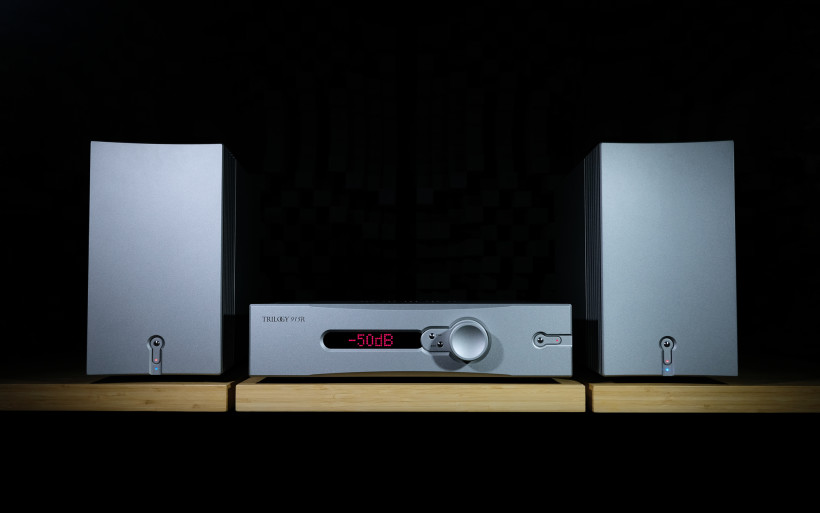 Once it became clear what Trilogy’s three-piece set did in my setup, it was high time to address its preamplifier’s input. The 915R was used alternately with Kinki Studio’s EX-P7 line stage, whereas 995R monos remained on duty. Access to their running time, names, current power load and other things were naturally all lost, and so was the utmost handy feature to have all three Nic’s statement items operational via just one button press.
Once it became clear what Trilogy’s three-piece set did in my setup, it was high time to address its preamplifier’s input. The 915R was used alternately with Kinki Studio’s EX-P7 line stage, whereas 995R monos remained on duty. Access to their running time, names, current power load and other things were naturally all lost, and so was the utmost handy feature to have all three Nic’s statement items operational via just one button press.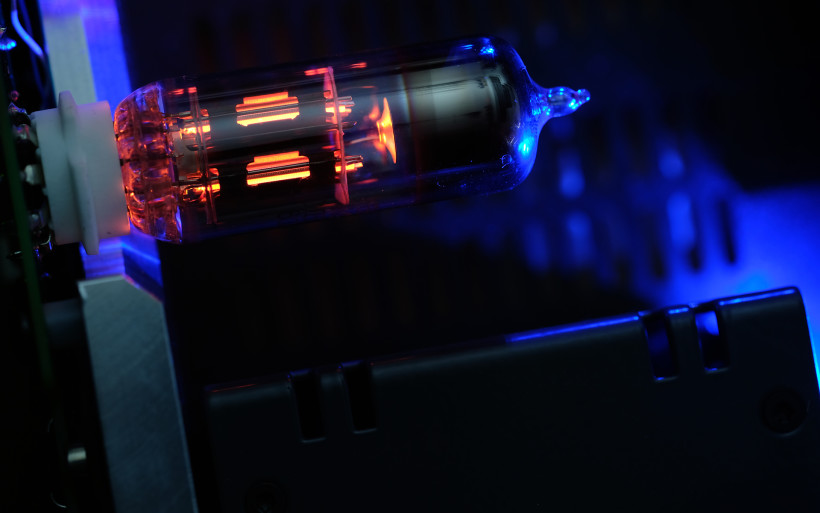 The quite recent Pass Labs XP-12 adventure revealed the EX-P7 as a swift trickster. The latter did many things right and on price-to-performance scale it scored a very high note, but as a less refined and somewhat nervous hardware with downstairs boosted, it was bested by the eloquent Pass rather easily. Today’s battle showed something similar even more bluntly, Kinki’s machine was no match for the 915R. Nic’s line stage clearly had the edge on counts not related to flavouring but quality and exquisiteness. It was very clear that the two specimens from vastly different tiers clashed.
The quite recent Pass Labs XP-12 adventure revealed the EX-P7 as a swift trickster. The latter did many things right and on price-to-performance scale it scored a very high note, but as a less refined and somewhat nervous hardware with downstairs boosted, it was bested by the eloquent Pass rather easily. Today’s battle showed something similar even more bluntly, Kinki’s machine was no match for the 915R. Nic’s line stage clearly had the edge on counts not related to flavouring but quality and exquisiteness. It was very clear that the two specimens from vastly different tiers clashed.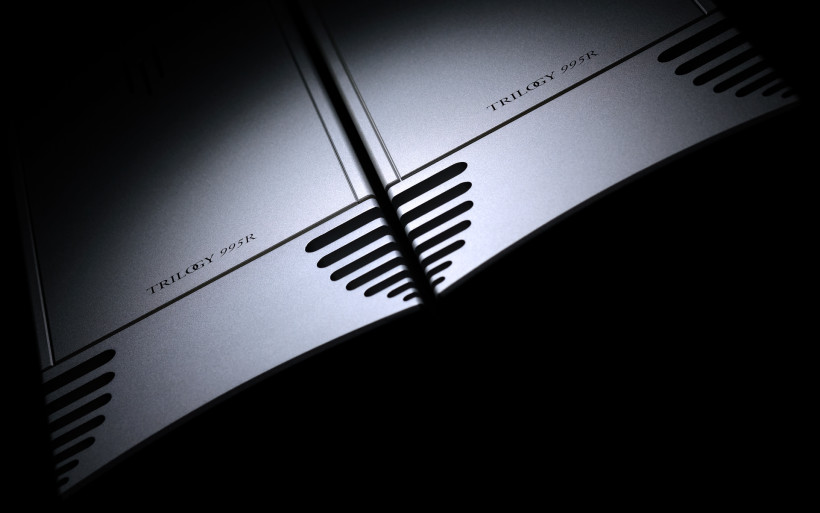 The most distinctive disparity between the EX-P7 and 915R wasn’t in their tonal balance but on-stage presence and intensity associated with it. Prior to the Brit’s arrival I wouldn’t have labeled the Chinese as texturally matte and/or at times stagnant even, yet in comparison it clearly was. Nic’s product had its space grander and airier to introduce more open and explicit outcome, but also sensibly moisturized and elastic. This last bit alone was significant and impactful enough to now view the 915R as single-handedly capable of pulling off exceptionally tangible stunts. As something that needs to be felt rather than heard, the hydrated sensation is difficult to frame into words, however one product enabled it whereas the other didn’t is the important part.
The most distinctive disparity between the EX-P7 and 915R wasn’t in their tonal balance but on-stage presence and intensity associated with it. Prior to the Brit’s arrival I wouldn’t have labeled the Chinese as texturally matte and/or at times stagnant even, yet in comparison it clearly was. Nic’s product had its space grander and airier to introduce more open and explicit outcome, but also sensibly moisturized and elastic. This last bit alone was significant and impactful enough to now view the 915R as single-handedly capable of pulling off exceptionally tangible stunts. As something that needs to be felt rather than heard, the hydrated sensation is difficult to frame into words, however one product enabled it whereas the other didn’t is the important part.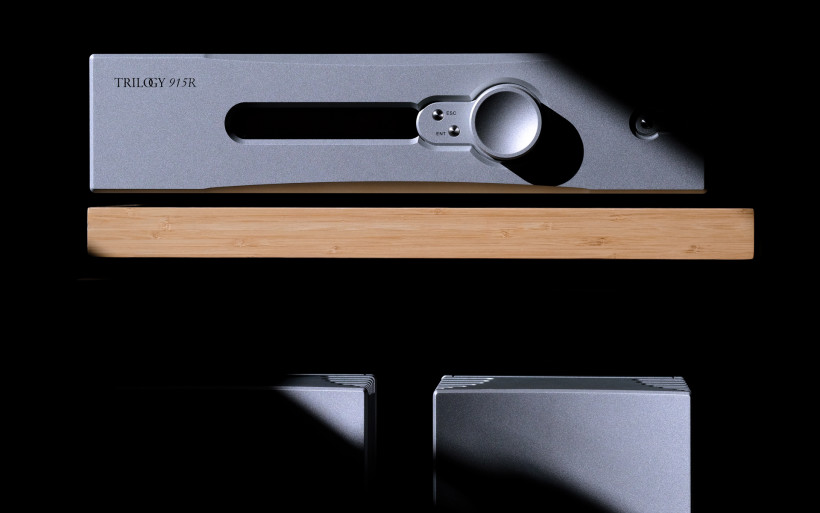 Kinki Studio EX-P7 proved me more than once how spatially potent it was, yet sang in flatter, smaller and more restrictive fashion in comparison to the 915R. Even though it painted accurate nicely filled instrumental sculptures and voices very easily, the Brit was more insightful due to its top class top end and openness, whereas its own sculpting skills shaped not sounds but very real and tactile beings. The EX-P7’s audibly elevated upper bass can be viewed as a feature and not shortcoming, but the 915R did something exactly opposite; it had its lowest realm very strong but range a bit above not boosted even one bit. When this line stage’s inherently agile nature was added to the mix, enormous dynamic scaling potential was the effect. The Chinese’s downstairs as a whole was always present, but a bit hollow in comparison, whereas the Brit’s less showy and fiercer punches invoked far more audible and sensible crack. When i.e. large drums or cellos were on, the two products weren’t quite comparable in how sizing and impact of these instruments’ they portrayed. The 915R’s far grander and instant low end was similar to what large and liberated paper membranes of OB designs do, whereas the EX-P7 acted like a regularly vented smaller affair. And lastly, space in-between speakers usually occupied by vocal lines the Kinki presented as more distant and less here. The Brit yet again did the same job more clearly, organically and articulately.
Kinki Studio EX-P7 proved me more than once how spatially potent it was, yet sang in flatter, smaller and more restrictive fashion in comparison to the 915R. Even though it painted accurate nicely filled instrumental sculptures and voices very easily, the Brit was more insightful due to its top class top end and openness, whereas its own sculpting skills shaped not sounds but very real and tactile beings. The EX-P7’s audibly elevated upper bass can be viewed as a feature and not shortcoming, but the 915R did something exactly opposite; it had its lowest realm very strong but range a bit above not boosted even one bit. When this line stage’s inherently agile nature was added to the mix, enormous dynamic scaling potential was the effect. The Chinese’s downstairs as a whole was always present, but a bit hollow in comparison, whereas the Brit’s less showy and fiercer punches invoked far more audible and sensible crack. When i.e. large drums or cellos were on, the two products weren’t quite comparable in how sizing and impact of these instruments’ they portrayed. The 915R’s far grander and instant low end was similar to what large and liberated paper membranes of OB designs do, whereas the EX-P7 acted like a regularly vented smaller affair. And lastly, space in-between speakers usually occupied by vocal lines the Kinki presented as more distant and less here. The Brit yet again did the same job more clearly, organically and articulately. The rather bloody and messy battle between the two line stages ended with their price difference reflected accordingly. FirstWatt F7 on duty with Martin Gateley’s diploes netted a very similar result, hence by describing what the 915R introduced in such a company I’d repeat myself. The takeaway is as follows: Nic’s preamp injected lifelike element, clarity and grandeur into two distinctively different chains and took nothing in return. It didn’t shift their core flavour, but artfully and easily extracted the very best out of them and made ’em even snappier and livelier on top of that. If that’s not impressive, than I haven’t got the faintest what is.
The rather bloody and messy battle between the two line stages ended with their price difference reflected accordingly. FirstWatt F7 on duty with Martin Gateley’s diploes netted a very similar result, hence by describing what the 915R introduced in such a company I’d repeat myself. The takeaway is as follows: Nic’s preamp injected lifelike element, clarity and grandeur into two distinctively different chains and took nothing in return. It didn’t shift their core flavour, but artfully and easily extracted the very best out of them and made ’em even snappier and livelier on top of that. If that’s not impressive, than I haven’t got the faintest what is.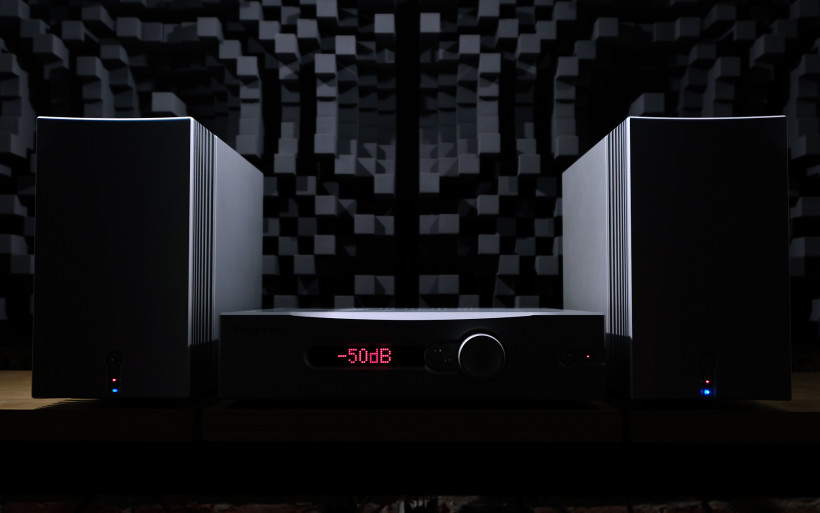 One last thing to discuss is the class A/AB switch on each 995R’s rear. The AB circuit engaged made bass response shorter, a bit drier and tighter. The more audible top end in this specific mode decayed less and the whole audible range wasn’t as euphonic and shimmery as in the other one. Class AB also spelled a bit bigger, less refined and more blunt message. The effect was still a typical Trilogy case, hence not sharp or desaturated but admirably gutsy, involving and tuneful. However, about 90% of the time I remained in the more moist, harmonically rich and refined class A envelope. It didn’t lack on speed and grandeur counts, yet made music more flowing and engaging, just as it should. I imagine that with gutsier, slower and texturally more intense speakers than mine, the AB option could work better. However, with my daily Swiss load, Nic’s 995R monos with their blue LEDs on was my pick.
One last thing to discuss is the class A/AB switch on each 995R’s rear. The AB circuit engaged made bass response shorter, a bit drier and tighter. The more audible top end in this specific mode decayed less and the whole audible range wasn’t as euphonic and shimmery as in the other one. Class AB also spelled a bit bigger, less refined and more blunt message. The effect was still a typical Trilogy case, hence not sharp or desaturated but admirably gutsy, involving and tuneful. However, about 90% of the time I remained in the more moist, harmonically rich and refined class A envelope. It didn’t lack on speed and grandeur counts, yet made music more flowing and engaging, just as it should. I imagine that with gutsier, slower and texturally more intense speakers than mine, the AB option could work better. However, with my daily Swiss load, Nic’s 995R monos with their blue LEDs on was my pick.
Summary
My Trilogy 925’s ongoing track record shows far fewer battles lost than won; it was clearly bested once or twice, yet never very easily outclassed on every count possible. Truth told, hardware capable of brutalizing my reference integrated this badly seemed highly unrealistic not more than two months ago. Today’s the day however, Nic Poulson’s Trilogy 995R and 915R statement team did this exactly and also proved to be the very best of its kind I’ve had the pleasure to audition at my place thus far. By far.
The Trilogy 995R/915R set surely looks, feels and behaves accordingly to numbers on its substantial price tag. These top of the line goods score very high notes on assembly, used materials and functionality counts, whereas clever interface, multiple menu options, quality PRC, class A/AB operation modes and fabulous visuals all serve as tasty cherries on top. But most importantly, Nic’s latest hardware very accurately showcases what luxuriously dressed artisanal level audio is all about. As I wrote in this article’s introduction, the man outdid himself and it shows.
Up to this point I viewed audio as a game of compromises more than anything else, even the priciest specimens auditioned didn’t provide exclusively upgrades. Thus far the question wasn’t about presence but size of a catch involved. The lesser it was, the better, but there always was one to begin with. However, two months spent with Trilogy’s latest is time long enough to understand that that’s not the case today. Nic Poulson’s fabulously balanced and all across the board stunning statement trio stands the closest to sonic perfection to my ears to date. It’s far from affordable, but on performance count surely second to none in my privy book and the one to beat, simply put victorious. Bravo and ’till next time!
Associated equipment:
- Amplifiers: Kinki Studio EX-B7, Trilogy 925, FirstWatt F7
- Sources: LampizatOr Pacific (KR Audio T-100 + KR Audio 5U4G Ltd. Ed.)
- Speakers: Boenicke Audio W8, sound|kaos Libération
- Preamplifiers: Kinki Studio EX-P7
- Transports: fidata HFAS-S10U
- USB: iFi audio iGalvanic3.0, micro iUSB3.0 and 3x Mercury cables
- Speaker cables: Audiomica Laboratory Celes Excellence, LessLoss C-MARC
- Interconnects: Audiomica Laboratory Erys Excellence
- Power components: Gigawatt PC-3 SE EVO+, Gigawatt PF-2 + Gigawatt LC-2 MK2 + Forza AudioWorks Noir Concept/Audiomica Laboratory Ness Excellence/LessLoss C-MARC
- Rack: Franc Audio Accesories Wood Block Rack
- Music: NativeDSD
Retail prices of reviewed components in EU (excl. VAT):
- Trilogy 915R: £15’000
- Trilogy 995R: £11’250/each
Manufacturer: Trilogy Audio Systems


